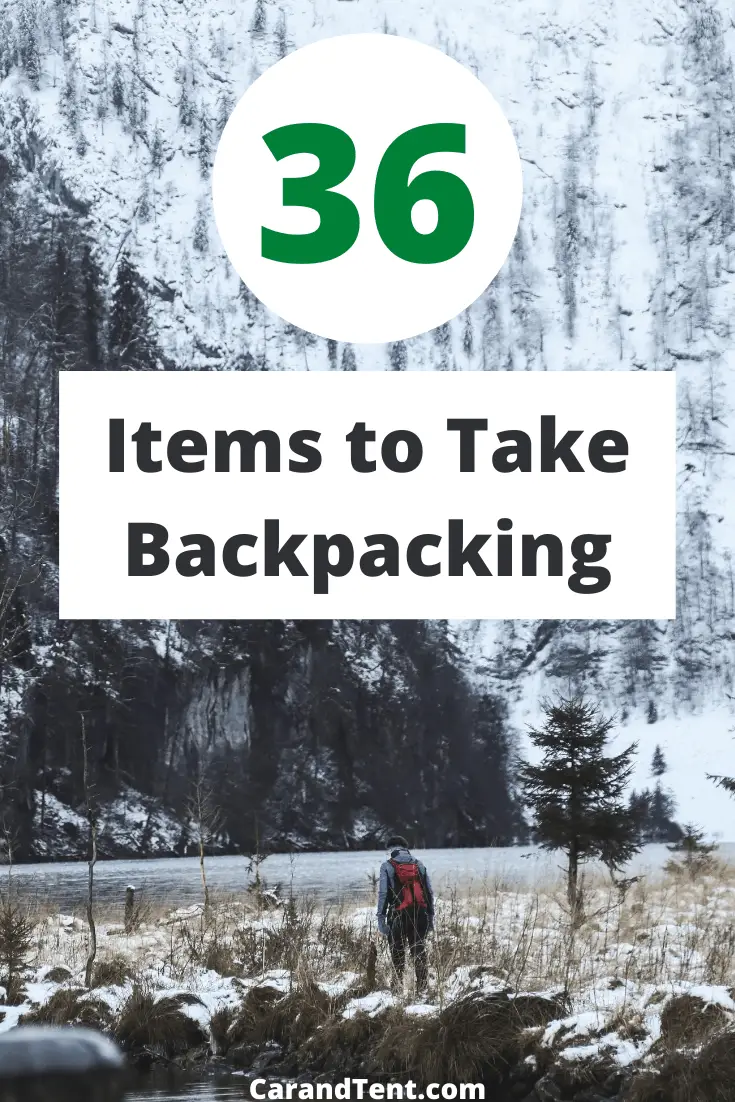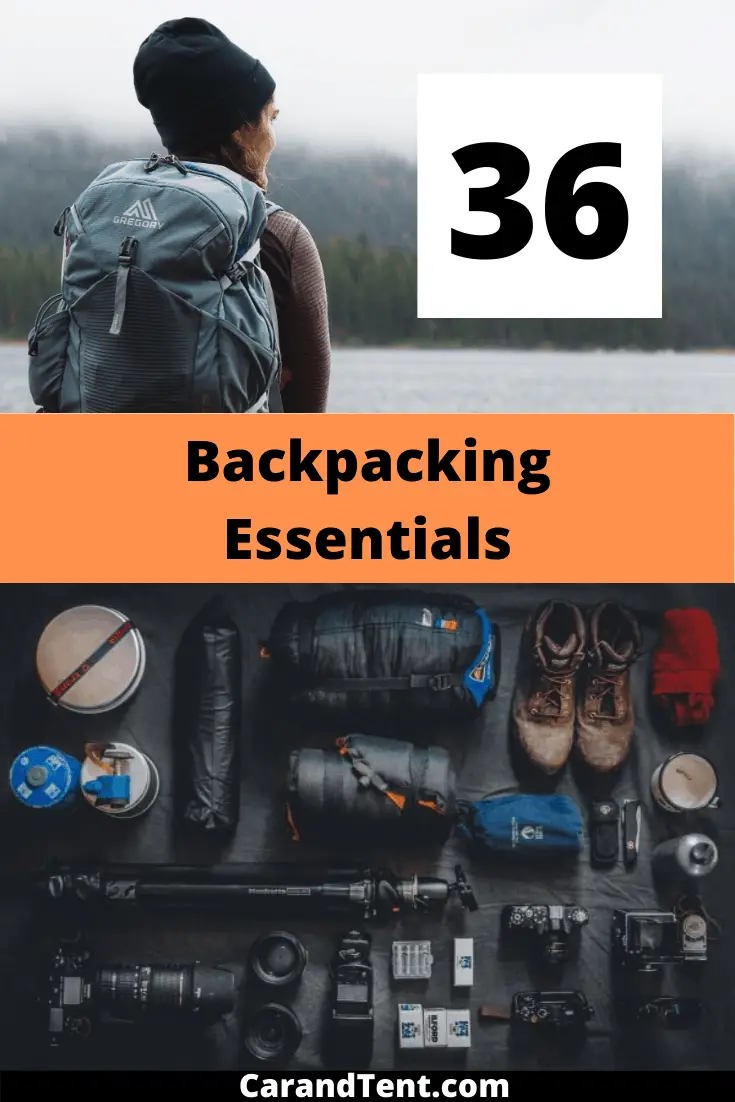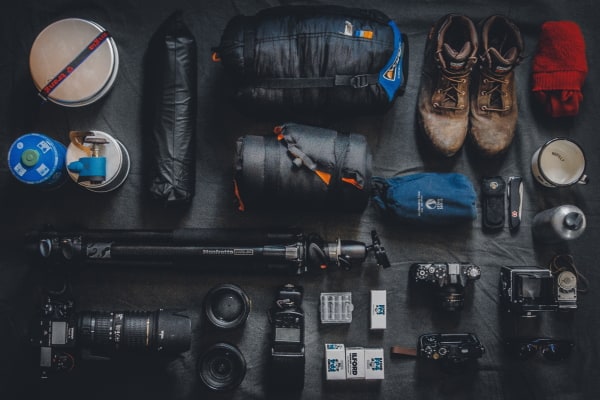
You’ll find that there are just some things that you can’t go backpacking without. There are also some things that you can go backpacking without but you may have a better time if you do have them. In this post, I’ll tell you what these things are.
Before we get started though, I should caution you that there are a lot of items listed on this page. Many of the items on this list can get expensive.
This is especially true if you decide you always want to have the best of the best. My advice is to choose the items that are the most important to you and to focus your budget on them. Over time, you can slowly upgrade the quality of your other items if and when you feel it’s necessary.
Table of Contents
Backpacking Essentials
Below are the items that you probably shouldn’t leave home without. This is true for both short backpacking trips as well as long backpacking trips.
Of course, every person and every backpacking trip is different, so please carefully think through each piece of gear before deciding to bring it or not to bring it.
Backpacks and Waterproof Bags
A good backpack acts as a foundation for all of your other pieces of gear. Your backpack should be large enough to carry everything you need but not much larger. Get a backpack that is too small and you’ll have to leave stuff behind. Get a backpack that is too large and you’ll end up carrying around an unnecessary amount of weight with you.
Also, consider the comfort and fit of your backpack. A backpack that doesn’t fit or that is uncomfortable will severely affect the quality of your trip.
For an in-depth look at how to buy a backpack, check out my guide to hiking backpacks. There you’ll discover what types of backpacks are available, the sizes of backpacks that are available, and how to properly fit and even pack a backpack.
One last thought to consider when buying a backpack is whether or not it is waterproof. If the backpack isn’t waterproof, you’ll also want to pack some waterproof bags. In fact, even people with waterproof backpacks may want to pack some waterproof bags as well.
Even a great backpack can get a small hole or rip in it and this could lead to the gear inside of it getting wet. Buy small waterproof bags for your smaller compartments and place a big compactor bag in your larger compartments and you won’t have to worry about your gear getting wet.
Shelter
The amount of shelter options for backpackers is immense. You can choose between using a tent, a bivy, a hammock, a tarp or just going full-on cowboy and sleeping under the stars.
For more on that, see my post on camping without a tent.
Personally, I lean more towards a tent as it provides more protection from the weather and can be a nice place to relax inside of when the weather is bad out. You can learn more about how to choose a tent on my post titled, “Choosing a Tent – The ultimate tent buying guide for campers“.
This being said, many long-distance and ultra-light backpackers prefer to go with a simple tarp system. Basically, they’ll use some lightweight tarps in conjunction with their trekking poles to create a nice lightweight shelter that is easy to carry. The only major downside to this type of shelter is that it does take a little more skill to set up.
A Sleeping Bag or Quilt
Sleeping bags can easily eat up a lot of space inside of a backpack and not all sleeping bags are built to take backpacking. For instance, I love my military sleep system but I wouldn’t bring the whole thing backpacking. The winter weather portion of the bag is just too bulky to easily carry and I can’t imagine backpacking in temperatures that are -10 degrees.
Instead, I bring the patrol portion of the bag as it’s a lot thinner and still provides enough warmth for temperatures as low as 30 degrees. You’ll want to make a similar choice when you buy your own sleeping bag for backpacking. Choose something that is warm enough to keep you comfortable, yet small enough and light enough to make a good backpacking companion.
If you want to know exactly what to look for in a sleeping bag, see my post on how to choose a sleeping bag.
For those of you looking for an alternative to the sleeping bag, you might want to look into a sleeping quilt. These are essentially large blankets with a thin layer on the bottom and a thick layer on top. A backpacker uses them by laying on the thin layer and covering themselves with the thick layer. They work well in milder temperatures and pack down smaller than the average sleeping bag.
Sleeping Pads
While many people might think they can get away without bringing a sleeping pad, it’s generally a bad idea. A sleeping pad does more than soften the ground for you. It also helps to provide a layer of insulation between you and the cold ground.
The benefit of this is two-fold. For starters, you’ll stay warmer with a sleeping pad than without. Also, you won’t have to worry as much about condensation building up underneath you. This will help save you from waking up wet.
For additional details on what to look for when choosing a sleeping pad, click here.
Backpacking Footwear
Short backpacking trips can probably be done with your regular hiking footwear. This could be your hiking boots, hiking sandals, trail runners, or whatever else you like to hike in.
If you don’t have hiking footwear yet, see my page titled, “Do You Need Hiking Boots“.
However, if you plan on doing a long thru-hike, you may find that you need to buy a new set of kicks. The reason for this is that your feet will probably swell up and your arches may even drop a little during your hike. In fact, some beginner backpackers have reported having to wear a full size bigger during their trip. For this reason, thru-hikers are often encouraged to get shoes that are a half size larger than what they would normally wear on a hike.
All this being said, I’ve never personally experienced this. My feet may swell a bit by the end of the day but I’ve never felt that I needed to increase my shoe size. This may be due to the fact that I usually buy footwear that offers a lot of room in the toe box so there is already room for some swelling. Also, I hike a lot and I don’t pack heavy so my arches are unlikely to undergo any changes while backpacking.
Backpacking Clothing
Backpacking clothing should be breathable and it should wick moisture away from your body. This means wools and synthetic materials should be chosen over cotton. Dress in layers and you’ll be able to shed gear or add gear depending on the weather conditions that you’re backpacking through.
I own a pair of nylon hiking pants that feature zip-away legs. These are great for backpacking because I can wear them as shorts when it’s hot or when fording shallow streams and I can wear them as pants when it’s colder or when I’m out in the sun.
Water and A Water Purification System
You’ll need water when you’re backpacking and you’ll want at least two separate containers to pack it in. This could come in the form of two bottles or a water bladder and a bottle.
On top of the water you pack, you’ll probably want to bring a water purification system. This will be crucial for long backpacking trips as you simply won’t be able to carry enough water for the entire trip. Your system can come in the form of filters or purification tablets but would ideally include both.
For more details on water purification, check out my post on backpacking water filters.
A First-aid Kit
Accidents and injuries happen and your first-aid kit may be the only way for you to treat these injuries. Get a good backpacking first-aid kit and learn how to use it before you head out.
Some basic items to have in a first-aid kit are band-aids, bandages, elastic wraps, antibiotic creams, pain medication, and antihistamines. You may also want to add in items like Immodium and anti-itch cream as well.
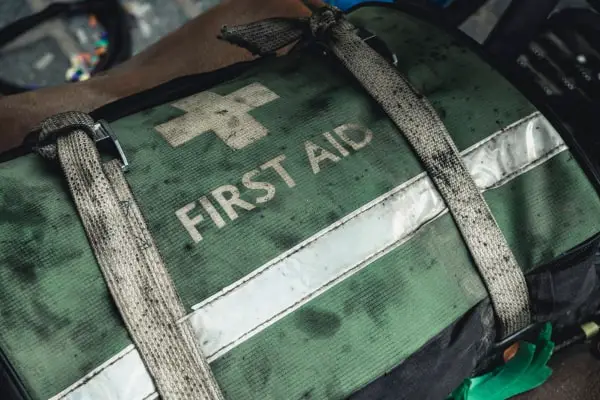
Food and Associated Gear
You’ll need to eat more when you’re backpacking, so plan on packing plenty of food. Good lightweight options usually come in the form of dehydrated foods so be sure to bring a way to rehydrate these foods so that you can actually eat them.
Most backpackers will pack a lightweight pot, a collapsible cup, and a spoon or spork. It’s an added bonus if all of these items can fit together inside of each other.
On top of all of this, you’ll probably want to bring a camp stove as well. Your options will usually consist of wood camp stoves, gas stoves, and alcohol stoves. Just be careful which one you choose as some areas will not allow you to use certain types of camp stoves. For instance, some state and national parks have banned stoves that do not have an “off-switch”. This essentially leaves only the gas stove as a viable camp stove option.
A Knife or Multi-tool
It’s always a good idea to have a good knife as well. You can use them to open premade meals, make repairs on your gear and so much more. Go with a single blade knife for more durability and cutting utility or switch to a multi-tool for more versatility.
In the interest of adding both utility and redundancy, it may be a good idea to get both a multi-tool and a knife. Doing so will allow you to choose a multi-tool that focuses more on versatility rather than a strong knife blade.
Lighting
A good headlamp is an absolute must for backpacking. You can use it to night hike, to set up camp in the dark, and even to find your way to an appropriate place to answer the “call of nature” after dark.
On top of this, you might also opt for a small flashlight as well. Lighting is incredibly important so it can’t hurt to have some redundancy.
A Fire Maker
In an emergency, being able to start a fire could be the difference between you living or dying. However, this isn’t really the primary reason to bring something to start fires with. In most cases, you’ll just need something to help you cook your food.
Lighters in bright colors, waterproof matches, and even fire sticks can all work to help you start a fire. Whatever you choose, just be sure you know how to use it before you head out.
Navigation Equipment
The amount of navigation equipment available on the market today is quite high. You can buy hiking GPS systems, set up hiking apps on your phone, buy maps of the area, or even use an old fashioned compass to help you find your way.
It’s a good idea to learn how to use a compass and a map before buying any of the more technical navigation systems. Once you have this method down, go ahead and add an app to your phone or buy a GPS to take with you on your hike.
Duct Tape
Duct tape is so useful, so versatile, so lightweight, and so easy to pack that it doesn’t make any sense not to pack some of it. Use it on the trail to repair gear or even to apply first-aid.
Instead of packing a bulky roll of tape, like the guy below, wrap some around an old ID card or one of those fake credit cards you get in the mail. Alternatively, you could wrap it around some of your gear, like your trekking poles for instance.
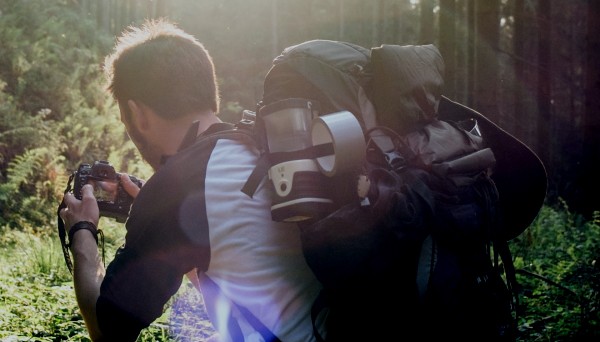
Wet Weather Gear
Getting soaked in a downpour and then having to hike while wet is just plain awful. It can lead to chafing, blisters, sickness, and even death, (although unlikely).
Avoid all of this by packing a good set of wet weather gear. This can come in the form of a poncho or a pair of wet weather pants and a top with a hood.
For more information on this, take a look at this post on hiking in the rain.
Animal Protection
There are two types of gear that you need to protect yourself from animals. The first type of gear is for food protection.
Protection for Your Food
For bears, you’ll need a bear bag, bear canister, or a kit for hanging your food away from bears. The type of protection you need will depend on the area you’re in as well as the laws for that area.
Unfortunately, bears get smarter and smarter each time they encounter a new form of bear proofing so sometimes the rules have to change to make up for this. Check with the rangers in the areas you’ll be backpacking through for guidance on what to bring with you for each trip.
You’ll also find that bears aren’t the only animals that want to eat your food. Even if you’re not in bear country, you’ll need to store your food in containers that mice, rats, and other small animals cannot chew through.
Personal Defense Against Predators
On top of this, you’ll also want some personal protection against animals. Pack some bear spray as well. Bear spray can work on bears as well as many other predatory animals. Some people feel that it does not work on mountain lions but this simply isn’t true. In fact, a mountain lion researcher in Montana found this out first hand when he used his spray to fend off a 120-pound female mountain lion. You can read more about this story on the Montana Fish, Wildlife, and Parks Association website.
Just like anything else, you’ll want to practice using your bear spray before heading out. This could mean that you have to waste a can of it and it will seem like a waste of resources and money. However, this type of experience and training is important and in my opinion, it’s well worth the $30.00 – $50.00 loss.
Learn more about bear protection on my “camping with bears” post.
Four-legged creatures aren’t the only animals you’ll want to protect yourself from. If you’re backpacking through areas with large numbers of poisonous snakes, you may want to wear boots or gaiters. Typically, the thicker the boot or gaiter, the more protection it will provide.
The reason for this is that anything between you and the snake’s fangs can help reduce the amount of venom that the snakes are able to inject you with. In fact, Reuters reports that researchers even found that a pair of jeans can reduce the venom injected into a snake-bite victim by up to 60%.
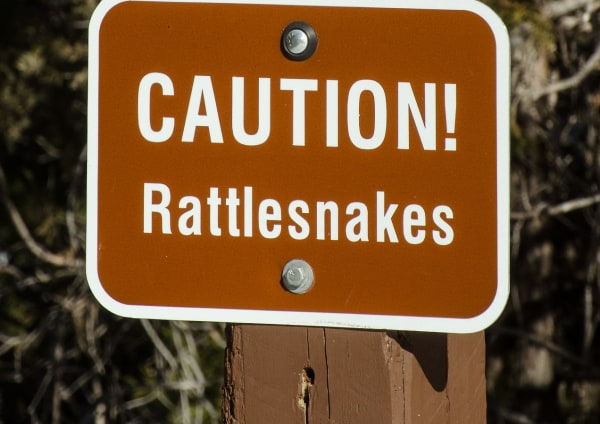
Bug and Insect Protection
Ticks, mosquitos, scorpions, spiders, and flies are much more likely to prey on you than bears, mountain lions, and snakes. Unfortunately, they can be just as deadly too.
Protect yourself from these pests by using bug sprays, covering exposed skin, and sleeping inside a shelter or underneath of mosquito netting. Deet-based products tend to work best on skin and Permethrin tends to work best on clothing.
Just keep in mind that, according to the latest studies from the CDC, neither Deet nor Permethrin is necessarily safe and they may even have a negative impact on the environment. For this reason, I try to use these products sparingly.
A Poop Kit
Leave-no-trace applies to your bodily wastes as well. Human fecal matter is a health hazard and must be buried or packed out with you, (depending on the area you’re backpacking in).
Pack a kit that includes a small shovel so that you can dig your own hole. If you have to pack your waste out, you’ll want to bring bags specifically made for that purpose as they’ll have materials in them to help quickly dry your waste out.
Here is a good video from REI that explains how to poop in the wild.
Your Cell Phone
You won’t always have cellular reception while you’re backpacking. In some locations, you may never have any cellular reception. Pack your cell phone anyway.
Your cell phone can be used to take pictures of snakes or spiders after they’ve bitten you, to store maps, to function as a GPS, and even to give rescuers an idea of where you last were before your cell phone lost its reception. On top of this, you won’t always lack reception and you may be able to use your phone to call for help when you need it.
Emergency Gear
As you already know, your cell phone can’t always be relied on to aid you in an emergency. For this reason, it may be a good idea to get a more robust solution. Satellite phones and emergency beacons can be a lifesaver and people looking to do a lot of backpacking really ought to invest in one. This is especially true if you plan on backpacking solo as you won’t have any help with you should you need it.
Other emergency items to consider would be bright clothing, an emergency whistle, and even a signal mirror. To signal SOS with a whistle, you’ll just need to remember to blow three dots, three dashes, and another three dots.
You can do the same thing with a mirror or even a flashlight but instead of making sounds, you’ll signal using three short flashes, followed by three long flashes, followed by three short flashes again. Write this down on the other side of your signal mirror and you’ll be less likely to forget it. If you want to get really detailed, you could learn Morse code or bring a handbook with you but that will add weight to your backpack.
Signal mirrors can be purchased in two different styles. You can buy plastic which weighs less and is less likely to break or you can buy glass which can reflect light to greater distances.
Gear Repair Kits
Although my grade school custodian might disagree with me on this, not everything can be fixed with duct tape. Bring patch kits for your sleeping pads and tents so that you can keep them working perfectly throughout your trip. You may also want to bring some seam sealer to help a leaky tent.
Some other items you may want to bring are extra o-rings for your water filters and extra bottle caps for your bottles. Think about your other pieces of critical gear and consider bringing redundant parts for them as well.
Sun Protection
A wide-brimmed hat can go a long way towards protecting you from the sun. In addition to this, you should pack sunglasses, sunscreen, and lip balm. If you’re winter backpacking, you may even want to bring tinted snow goggles.
Are you going to be camping in the desert? If so, you may even want to bring a reflective umbrella. This will keep the sun off of you and will help keep you cool underneath the desert sun.
Sand Protection
Desert and even beach campers will also need some additional protection against the sand. Bring goggles to protect your eyes and a bandana or face mask to protect your lungs. You may also want to consider bringing a pair of gaiters to keep the sand out of your hiking boots.
Medicine
If you’re on any prescription medicines, you’ll need to pack them along with you. Be sure to read the label so that you’ll know how to properly store them. Some medicines lose their effectiveness if they’re exposed to certain temperatures and you’ll need to be aware of this fact.
Pill pouches can be useful in this situation since they’ll keep all of your medicine in one easy to find place, but again they’ll add some weight and bulk to your pack so you’ll have to weigh this against their utility.
Personal Hygiene Items
A lot of backpackers forgo the use of deodorant. This can help to reduce the weight of your pack and can be more comfortable on long trips. You may even decide to leave behind soap and shampoo as well.
However, you shouldn’t leave behind your toothpaste and floss. A few pimples due to a dirty face will go away but poor dental hygiene can last a lifetime. Pack a small toothbrush or cut one in half to reduce its size. Bring a small container of toothpaste and be sure to lock it up with your food at night as bears have been known to go after its minty fresh smell.
Nice to Have Backpacking Items
There are a lot of backpacking items that you can bring to make yourself more comfortable on your trip. These items aren’t necessarily essential but they could make the trip more fun.
Just keep in mind when packing these items that the luxury of the item could easily be overshadowed by its weight. Pack too much weight and you’ll end up with sore legs, sore feet, and a sore back. You may also end up with fewer miles done each day, so carefully consider each item before committing to bringing it.
Trekking Poles
Trekking poles are items that aren’t vital to your trip but they could definitely make the trip better and possibly even easier. This is because a good set of trekking poles will help to redistribute some of the weight of your body off of your legs and onto your upper body. Because of this, you recover from hikes faster and can fit more miles into your trip each day.
Also, trekking poles can reduce the chances that you’ll fall and become injured. For more details on what trekking poles can do for you, check out my post titled, “Hiking with Poles – The Pros and Cons“.
A Backpacking Watch
A backpacking watch is another item that can bring a lot of functionality to the table. You can buy a watch that will track your miles, tell you your altitude, and even help you navigate.
These watches will not weigh much and they won’t take up any space within your backpack. The only major disadvantage of these watches is that they can get quite expensive.
Gaiters
Gaiters help to keep dirt, sand, and water from getting into your shoes. They may also help protect you from ticks, spiders, and even snakes. These items don’t weigh much and they don’t take up any space in your backpack.
The only two downsides I can see to wearing gaiters is that they could potentially make you slightly hotter in warm climates and they do cost money to buy. It’s also one more piece of gear to worry about which is always a hassle.
Hot Hands
I love Hot Hands. Each year I buy them in bulk and I put them in backpacks, in my glove compartment, and even in my suitcases.
Hot Hands work really well and they can be very comforting in cold weather. The major downside to them is that they can only be used once and then you have to carry them with you for the rest of your trip.
An Umbrella
Umbrellas can be used for both desert hiking and for hiking in the rain and even the snow. They’re also great for keeping dry or out of the sun around camp.
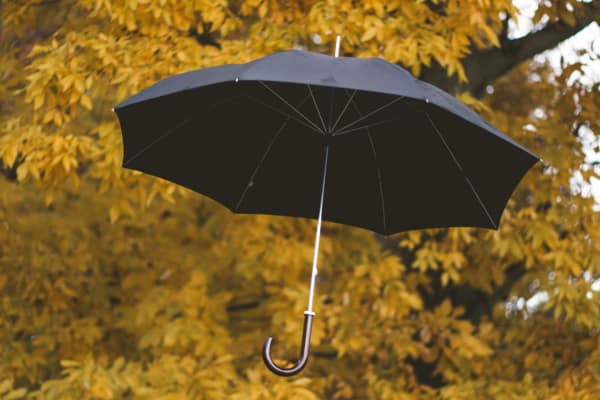
The problem with umbrellas is that they do add significantly to your base weight. Also, they can be hard to use with trekking poles as you have to hold both the pole and an umbrella at the same time. When it’s raining, you may have to decide whether you want to have an umbrella over you to keep you dry or a set of trekking poles underneath of you to keep you from falling.
A Tarp
Tarps don’t take up a lot of room and they can serve many purposes. You can use them to get out of the weather, you can use them to sit on, and you can use them as a footprint underneath your tent.
Again, the downside is that a tarp is going to take up some space and add some weight. Personally, I feel that the small amount of weight and space they do take up is far outweighed by the benefits they bring to the table.
A Chair
I’ve never gone backpacking with a chair. I don’t even bring a stool with me. However, many people swear by their backpacking chairs. They feel the extra comfort the chairs bring them far outweighs the additional weight they add.
When looking at some of these backpackers sitting comfortably in their chairs while I sit on a tarp on top of a puddle, I tend to agree with them. Any other time though, I’m glad that I don’t have to worry about carrying a chair around with me.
A Pillow
A backpacking pillow usually comes in the form of an air pillow or a compressed foam material. These pillows insulate the ground underneath your head and can help you get a better night’s sleep.
I’ve backpacked with a backpacking pillow and without and I can’t decide whether they’re worth it. When you’re tired, some balled up clothing can often work just as well as a backpacking pillow but without the extra gear. Other backpackers, on the other hand, swear by them and they wouldn’t leave their pillow behind for anything.
Camera Gear
A good DSLR or 360 camera will add a lot of weight and bulk to your backpack. It can also increase the amount of work you need to do each day to take care of your gear.
This being said, a good camera can help you remember your trip long after the trip is done. My personal choice is to usually bring it on shorter trips and to leave it behind on longer ones. Also, once I’ve brought and used a DSLR in one area, I never bring it back to that area again.
A Power Bank
Cell phones, rechargeable headlamps, GPS systems, backpacking watches, and cameras all need to be charged. For longer trips out in the woods, you may want to bring a power bank or two with you. Just keep in mind that the greater the power capacity, the heavier the power bank will be.
Camp Shoes
After a long day of hiking, it can feel really great to get out of your hiking boots. Some people pack flip flops, others pack crocks, and some people even bring along a pair of old slippers.
In my opinion, camp shoes are a definite luxury and you should only bring them if they give you a full-on Marie Kondo moment and “spark joy” for you. Otherwise, thank them for their service and leave them at home.
Wrapping It All Up
Only you can decide what you need and what you don’t need on your backpacking trip. One person’s “essential item” might be another person’s “luxury item”.
Put some thought into what to bring and know that you’ll probably make a bunch of mistakes along the way. Over time, you’ll discover what gear works best for you and what gear can be left behind.
